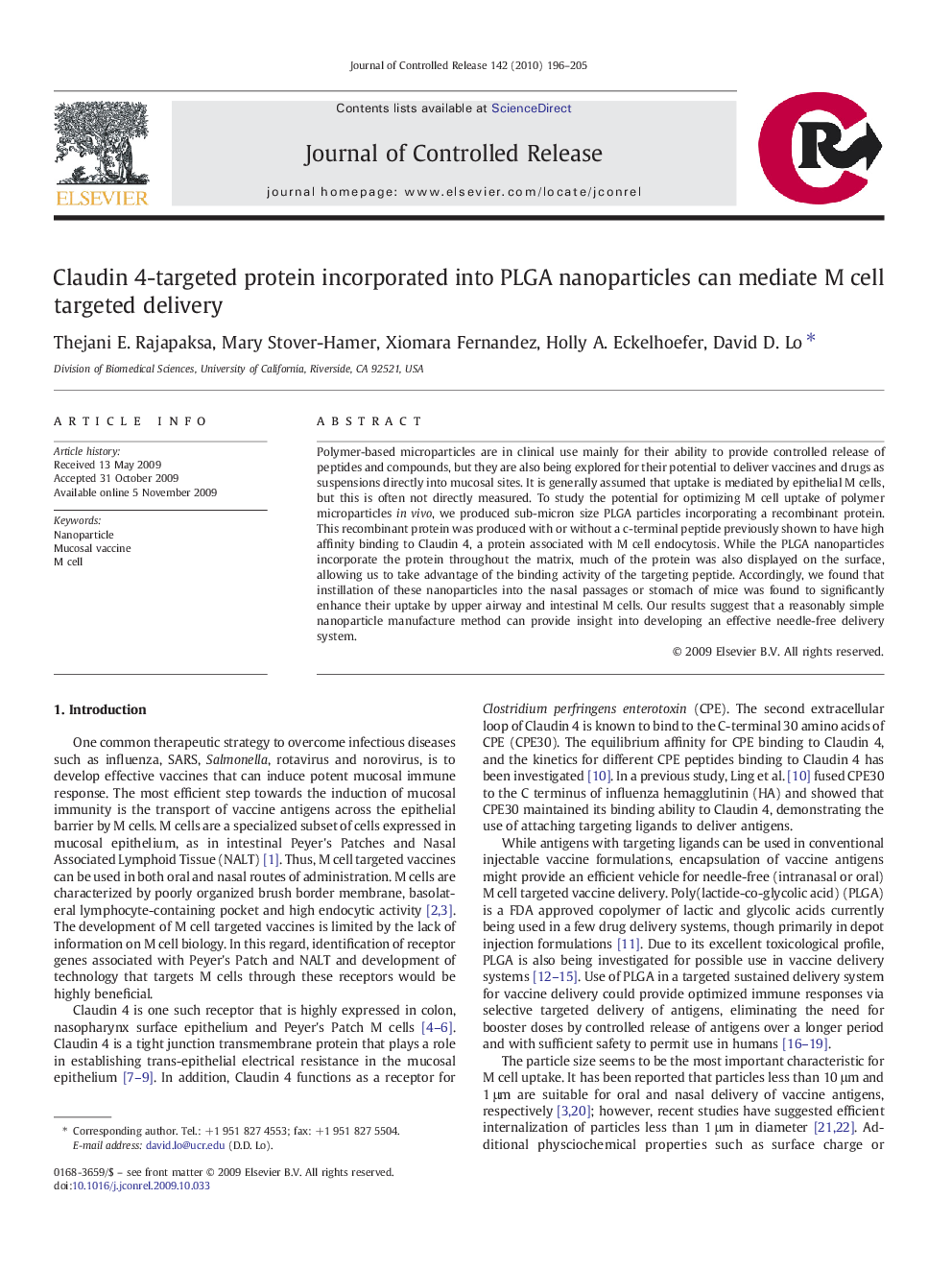| Article ID | Journal | Published Year | Pages | File Type |
|---|---|---|---|---|
| 1425990 | Journal of Controlled Release | 2010 | 10 Pages |
Polymer-based microparticles are in clinical use mainly for their ability to provide controlled release of peptides and compounds, but they are also being explored for their potential to deliver vaccines and drugs as suspensions directly into mucosal sites. It is generally assumed that uptake is mediated by epithelial M cells, but this is often not directly measured. To study the potential for optimizing M cell uptake of polymer microparticles in vivo, we produced sub-micron size PLGA particles incorporating a recombinant protein. This recombinant protein was produced with or without a c-terminal peptide previously shown to have high affinity binding to Claudin 4, a protein associated with M cell endocytosis. While the PLGA nanoparticles incorporate the protein throughout the matrix, much of the protein was also displayed on the surface, allowing us to take advantage of the binding activity of the targeting peptide. Accordingly, we found that instillation of these nanoparticles into the nasal passages or stomach of mice was found to significantly enhance their uptake by upper airway and intestinal M cells. Our results suggest that a reasonably simple nanoparticle manufacture method can provide insight into developing an effective needle-free delivery system.
Graphical abstractFigure optionsDownload full-size imageDownload as PowerPoint slide
